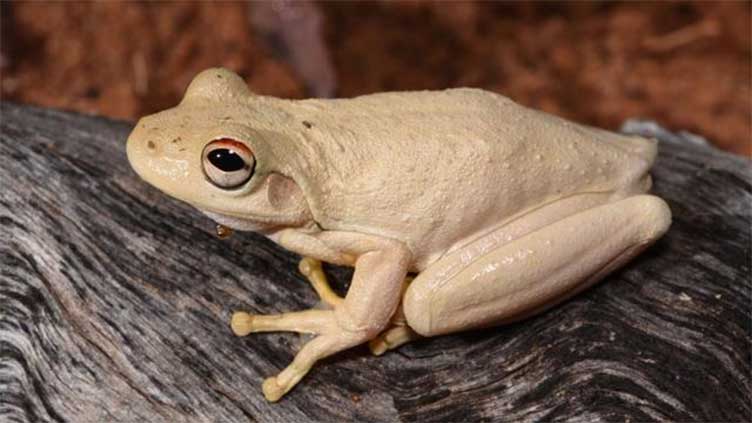Celebrity-inspired creatures join Australian fauna among 750 new species

WeirdNews
Taxonomy research reveals that 70pc of Australia’s native species remain unnamed
(Web Desk) - Australia’s wildlife just got a lot richer with 750 new species added to the nation’s official list of species in 2023.
Among these are a laughing frog, a marine worm named after the legendary Sir David Attenborough, and an orb spider with a name inspired by Tom Hardy’s Marvel character, Venom.
These species are now officially part of Australia’s rich and unique biological tapestry, showcasing the importance of ongoing taxonomic research in the country.
One of the standout additions to the list is the western laughing tree frog, Litoria ridibunda. Unlike typical frogs that croak, this species emits a sound that resembles laughter. Its distinct vocalization has made it a fascinating subject for researchers.
Another notable entry is the Marphysa davidattenboroughi, an intertidal marine worm named in honor of Sir David Attenborough, recognizing his lifelong dedication to nature and conservation. Additionally, an orb spider, Venomius tomhardyi, joins the list, its name paying tribute to Tom Hardy’s portrayal of the Marvel character Venom.
These newly listed species highlight the diverse and often surprising forms of life that inhabit Australia. The National Species List, a taxonomic database, serves as a formal record of the country’s native plants, animals, fungi, and other organisms. It’s essential for recording and protecting the diverse species found across this large continent.
Taxonomy, the science of describing, naming, and classifying life on Earth, is at the heart of these discoveries. Taxonomists meticulously study differences in physical appearance, genetics, behavior, and habitat to identify species that are new to modern science. Despite the advances in this field, many species remain undiscovered.
“Many people might be shocked to hear that 70% of our native species remain unnamed and hidden to science,” said Tanya Plibersek, Australia’s Minister for the Environment and Water, as reported by The Guardian.
Australia is home to over 150,000 native species, and taxonomists are making significant strides in cataloging them. On average, about two new species are named every day, a testament to the country’s rich biodiversity.
Euan Ritchie, a professor of wildlife ecology and conservation science at Deakin University, emphasized the importance of continued research, saying, “It’s vital we continue to support surveys and taxonomic research across this vast continent, as without doubt many more species remain to be formally described by science.”
Ritchie also pointed out that while many species may be unknown to Western science, they are often familiar to Indigenous peoples, who have recognized and interacted with these species for millennia.
He advocates for greater collaboration between traditional Indigenous knowledge and modern scientific methods to further enrich our understanding of Australia’s natural world.
The recent additions to the National Species List are just the beginning. Many of the newly described species are invertebrates, a group that includes insects, spiders, and worms, which form the majority of Australia’s animal life.
“The more scientists look, the more they realize that most invertebrate species are yet to be formally described by taxonomists,” The Guardian quoted Ritchie.
The Australian government is committed to supporting this ongoing work. Plibersek announced that 14 projects would share $2 million in funding through the Australian Biological Resources Study’s national taxonomy research grant program. These projects aim to continue the work of identifying and classifying Australia’s native species throughout 2024-25.



